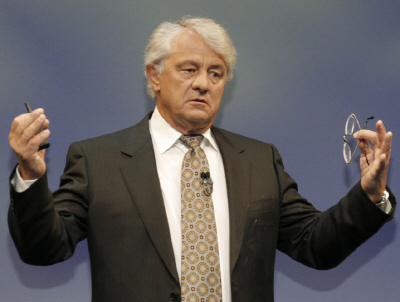SAP plots in-memory database pilots, analytics appliance with HP

Updated: SAP chairman Hasso Plattner is looking for pilot customers to give its in-memory technology a spin over the next 12 months. SAP is also launching an analytics appliance that will use in-memory technology to answer queries faster.
Plattner, who delivered a keynote at the company's Sapphire powwow in Orlando Wednesday, detailed the company's plans in an interview with a roundtable of bloggers. SAP CTO Vishal Sikka announced the company's in-memory product plans on Wednesday at Sapphire.
In-memory technology has been touted by SAP for years as a way to speed up queries. The promise is that data can be delivered in real-time. In a nutshell, in-memory databases rely on a system's memory for storage. Plattner has been leading a research and development effort at SAP to deliver in-memory improvements to applications.
SAP's in-memory moves are taking two forms (statement):
- First, SAP is launching an analytics appliance to ride shotgun with its business intelligence software. This appliance, dubbed the SAP Business Analytic Engine, will use in-memory technology and a calculation algorithm. The idea is the companies can use it to analyze real-time data without touching the data warehouse. Hewlett-Packard is the hardware partner for the appliance, which is aimed squarely at Oracle.
- In addition, SAP is also launching an accelerated edition for its BusinessObjects Explorer. This edition of SAP's business intelligence software would use in-memory technology to deliver faster query results.

For the enterprise, a roll out of SAP's in-memory databases will result in analytics that are "really in real-time," according to Plattner. "In analytics, there's theoretically no limitation on what you can analyze and at what level of detail. (In-memory databases) mean reports on a daily basis, hourly basis. The users aren't relying on DBAs (database administrators) to define data.
Latest SAP news from Sapphire 2010
In practice, in-memory means that management can change assumptions on their models and potential business moves and get simulations in 3 seconds. The game here for SAP is to displace relational databases, notably Oracle. And if SAP is successful, storage needs will also fall. "Storage will go away from a turning disk," says Plattner.
SAP's in-memory database argument has always made sense in theory. Analytics is just too slow. Plattner said a report on the last eight quarters in China can take a week---a little less if he busts a few chops. But every enterprise looking for data has a similar issue. Anyone looking for something custom from their data warehouse is usually disappointed at the lack of instant gratification.
All of this sounds swell in theory, but the big question is how SAP will bring in-memory technology to the market. Plattner has an interesting approach to that question too. SAP is planning an in-memory offer that customers can't refuse. It will roll out in-memory to customers without them having to do anything. Let's face it, customers don't have the money, people or time to fiddle with their databases. Plattner's plan goes like this:
- Set up in-memory stores;
- Allow them to run in parallel with existing databases;
- Let the customers see the speed themselves;
- And they can use in-memory in phases.
"We think we can apply the in-memory database risk free," said Plattner. "We'll do it in multiple steps and you run your system as it is. It will run 100 percent in parallel."
Plattner showed off some data from a large consumer product customer that was providing SAP with information for testing. The data was altered for privacy's sake and the scale was changed, but the information was live. On an iPad, Plattner pulled up delinquent customers around the U.S., what they owed and the interest rate. Plattner is just in love with Apple's iPad as a business tool.
Now SAP plans on taking in-memory to customers. The pilots over the next 12 months will be interesting to watch. The big question is how SAP plans to monetize in-memory databases and whether faster queries can displace Oracle databases.
Cowen & Co. analyst Peter Goldmacher remains skeptical. He said Wednesday in a research note:
The company is very bullish on its in-memory database, which essentially promises faster query times. While speed is always a selling point, in-memory isn't sold stand alone, it must be embedded in a product offering. We are dubious that in-memory is proprietary to SAP and compelling enough to boost sales of its existing products.
However, if SAP can ding Oracle and drive sales of its software with a performance boost that may be return enough for in-memory. There is an industry shift underway, but other companies also see the opportunity for in-memory databases. To wit, Oracle bought TimesTen in 2005 and IBM acquired SolidDB in 2008. If all applications have some form of in-memory database usage it remains to be seen what edge SAP can garner over time. For now, in-memory databases are a great topic with wide implications for enterprise applications. Whether it's a game changer for SAP remains to be seen.
More reading on in-memory: